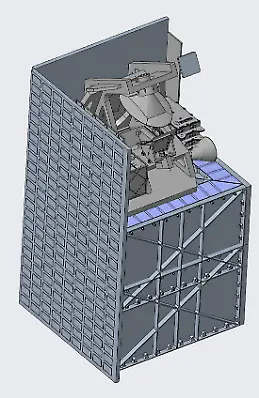New satellite contributes Arctic weather data
A new Swedish-led satellite for improving coverage of the Arctic has gained support from enough countries within the European Space Agency (ESA) to receive budgetary approval. Work can now progress on building an initial prototype version of the Arctic Weather Satellite, a polar satellite with great potential for improving weather forecasts in the Arctic and the surrounding area.
The Arctic Weather Satellite (AWS) is a small meteorological satellite with advanced sensors that provide information about humidity, precipitation and ice clouds in the atmosphere. This data offers meteorological institutes excellent opportunities to improve weather forecasts in Arctic and subarctic areas, and helps improve the quality of global forecasts.
“SMHI has been involved in formulating the requirements for a future meteorological satellite system to meet the needs of the Nordic weather services,” says Anke Thoss, Head of the Atmospheric Remote Sensing Research Unit at SMHI.
The importance of satellite data for weather forecasts
Today, satellites contribute much of the information used to produce weather forecasts. The Arctic Weather Satellite will meet the need for a greater number of more frequent data deliveries, in order to provide regional weather forecasts that remain accurate by being updated regularly.
“If we were to grade data sources according to their effect on forecasting accuracy, microwave data from satellites would be the clear leader,” explains Magnus Lindskog, researcher in meteorology and the use of various types of data in weather forecasts at SMHI.
The geostationary satellites positioned above the equator have poorer coverage at higher latitudes, close to the poles. Adding polar satellites that circulate around the Earth via the poles is therefore essential in order to give the Nordic meteorological institutes access to fresh, high quality data.
“Getting coverage which is as good at high latitudes as at the equator will require many satellites,” says Adam Dybbroe, a satellite expert at SMHI. “This will prove very expensive if it involves replicating today’s major satellite programmes.”
Developing an initial prototype
“The Arctic Weather Satellite is a demonstration mission,” adds Adam. “If this small, cost-effective platform is a success, we can easily scale up to a full programme with many satellites. This can then supplement EUMETSAT’s major satellite programme, with the first new generation satellite due to be launched at the end of 2022.”
Planning is now continuing for the Arctic Weather Satellite, with the aim of delivering the first prototype in around 2023. The project is in line with Sweden’s Arctic Strategy, and will an important complement to other meteorological satellites. It has received support from all the Nordic nations, as well as France, Canada, Luxembourg, Portugal, Switzerland, Spain, Germany and Austria, and has a budget of just over EUR 40 million.
 Zoom image
Zoom imageThe Arctic Weather Satellite is a small polar satellite that will boost satellite coverage of the Arctic, giving meteorological institutes excellent opportunities to improve weather forecasts in Arctic and subarctic areas.


